The dead stock of red and white wine happens fast if you store wine incorrectly. On the other hand, storing it at the proper temperature is important if you intend to hold on to your wine for ages. The best storage temperature for red wine will help your wine age gracefully without developing faults.
It is not only complex kinds of stuff like your ammo that require controlled temperatures to stay safe. In all cases, whether you want to store your red wine for the short or long term, it is essential to maintain a constant temperature. Inconsistent temperatures may cause oxidation, damage to wine labels, and premature aging of your wine.
What is The Ideal Temperature for Storing Red Wine

Image Credit:vinovest.co
According to the wine storage temperature chart, the ideal temperature range for red wine storage is between 45 degrees and 65 degrees Fahrenheit. However, 55 degrees is the optimal temperature for storing red wine. Therefore, strictly maintain the optimal temperature of 55 degrees for long-term storage. Still, short-term storage is safe to fluctuate slightly a few degrees between the optimum temperature range. Therefore, you are better off storing the red wine at serving temperatures for the short term.
Storing Red Wine at Temperatures Above 65 degrees Fahrenheit
Storing red wine at too high temperatures will make your wine age quickly and prematurely. At temperatures above 70 degrees, the wine will heat up and degrade quickly, losing its flavors and aromas. These high temperatures can also damage the wine’s seal and cause oxidation by allowing oxygen into the wine bottle rendering your wine undrinkable.
Storing Red Wine at Temperatures Below 45 degrees
Cooler temperatures slow down the aging process of wine. However, it can be a drawback if you are aging the wine correctly because, with the chilly temperatures, you can no longer follow the traditional wine aging timetable.
Extreme cold temperatures can as well ruin your red wine. At about 200F, the wine freezes, causing expansion that may break the seal or crack the wine bottle allowing in oxygen, which can lead to faulty or undrinkable wine.
Temperatures for Red Wine Storage and Serving
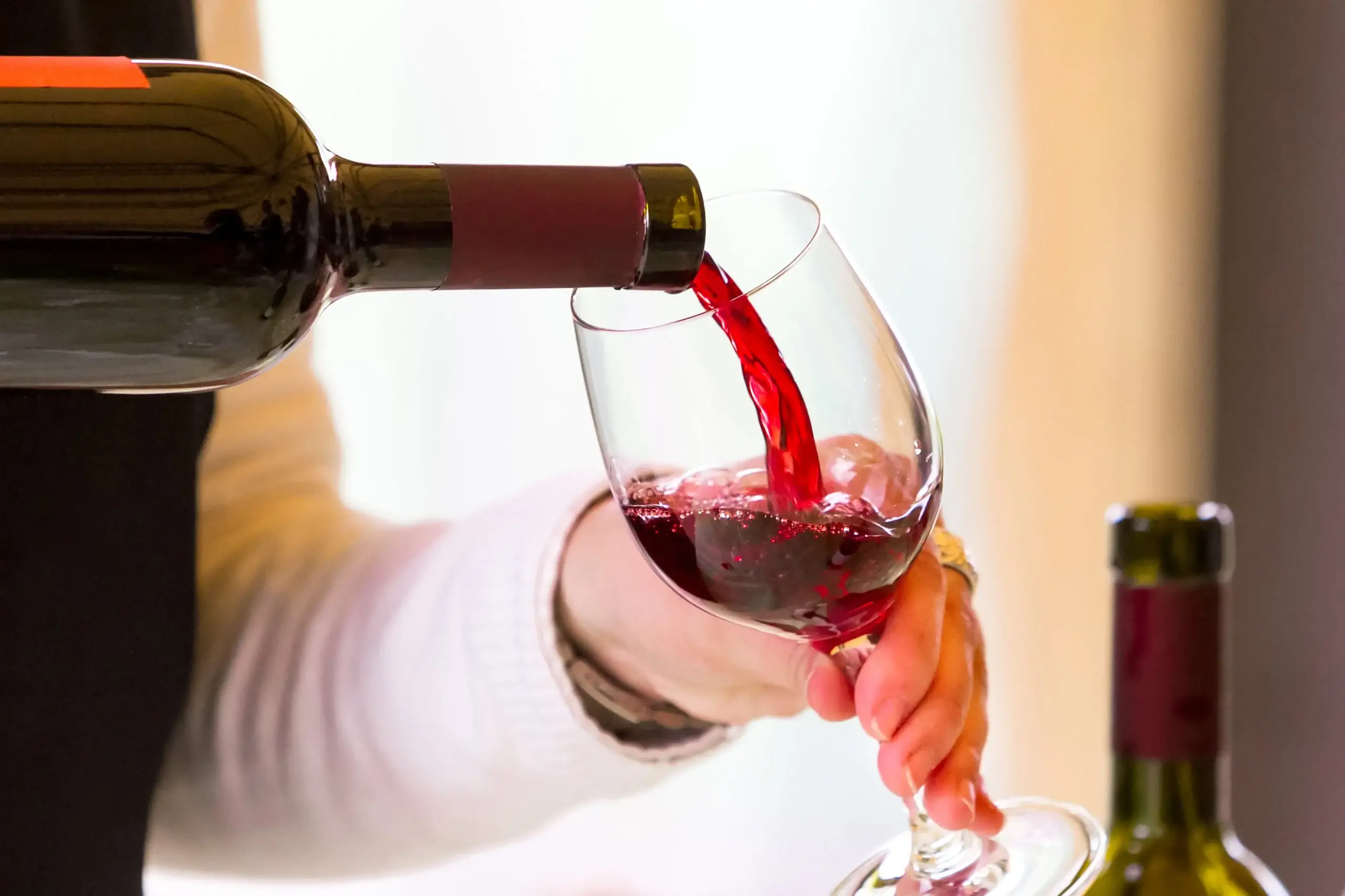
Image Credit:vinecarta.com
Storage and serving temperatures depend on the style of red wines, but ideally, red wine should be served at temperatures cooler than the room temperature, ranging from 62 to 68 degrees
Storage and Serving Temperature for Full-bodied Red Wines
Full-bodied red wines are made with a variety of thick-skinned grapes with high tannin levels, rich flavor, and alcohol content of over 13.5%. The types of wine of this style are grouped into three categories of different wine storage temperatures and serving wine temperatures.
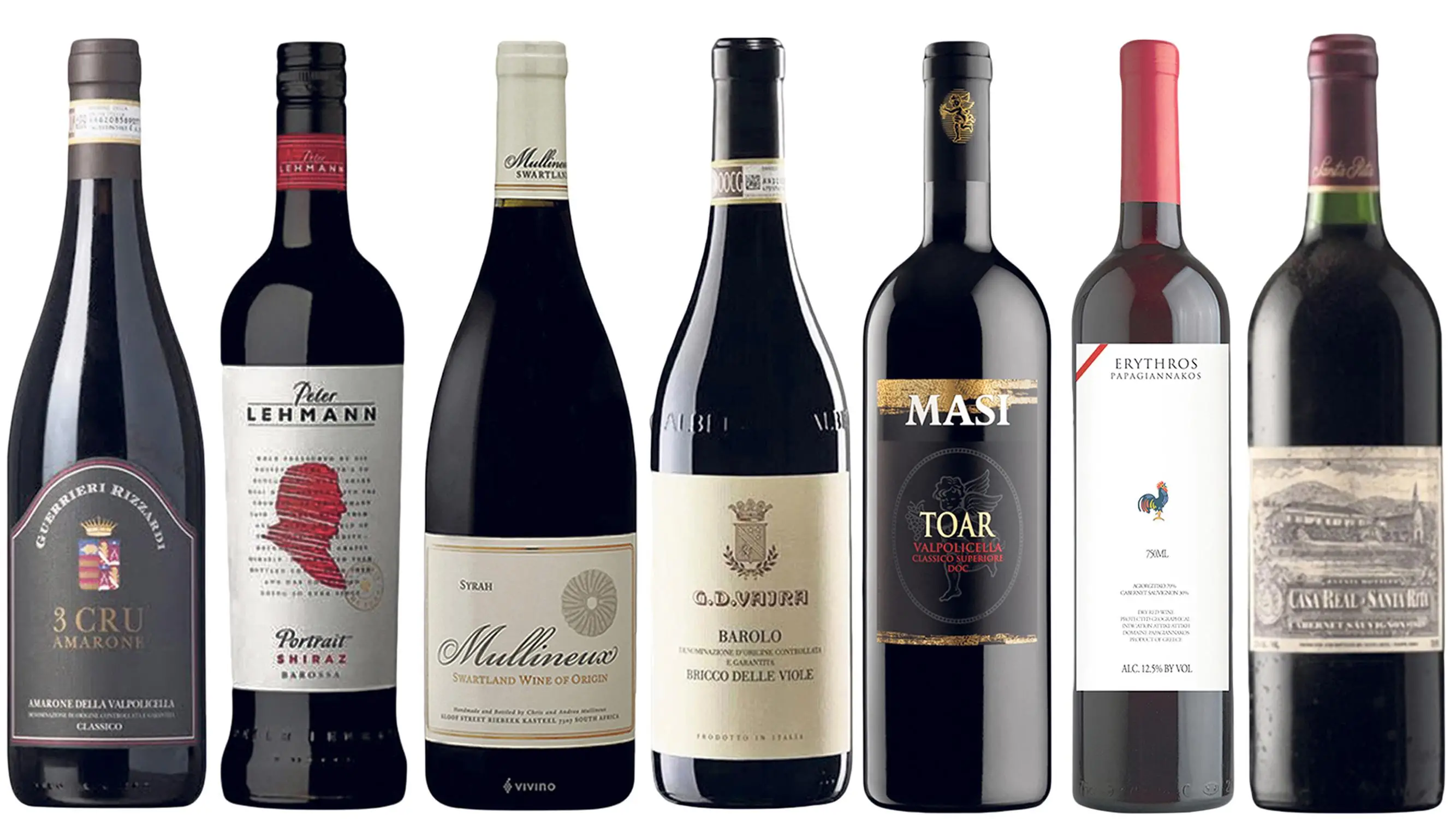
Image Credit:thetimes.co.uk
The first category consists of Red burgundy, Cabernet, Barolo, Berbersco, Brunello, Malbec, Merlot, and Recioto. The ideal storage temperature for these red wines is 63 degrees, with a serving wine temperature range of 60 to 65 degrees.
The second group of shiraz, grand cru, Bordeaux, zinfandel, Carmenere, and Ribera Del Duer are best stored at 64 degrees and served at 65 degrees. Finally, the last group, which consists of Vintage Port, Madeira, and Banyulus, has an ideal storage temperature of 66 degrees and a serving temperature between 60 and 64 degrees.
Notably, these storage and serving temperatures of full-bodied wines are not at the extremes; hence, they still maintain their rich flavors and aromas whenever served.
Storage and Serving Temperatures for Light and Medium Red Wines
There is not much difference between light and medium red wines. These wines are made with thin-skinned red grapes and have an alcohol content below 12.5% for light red wines and between 12.5 and 13.5% for medium red wines. They are grouped into 4 with different storage and serving temperature.

Image Credit:vinovest.co
The first category consists of Beaujolais red wine is best stored at 54 degrees and served at 55 degrees. It is best kept and served at the optimal storage temperature for the red wines. The other category, Spanish and Portuguese red wines, has an ideal storage temperature of 55 degrees and a serving temperature of between 53 and 57 degrees.
On the same red wine styles are light zinfandels, ideally stored at 59 degrees and served at a range of 55 to 60 degrees, and the last group of Bordeaux, Merlot, Rioja, and Pinot noir that should be stored at 61 degrees and served at the temperatures between 55 and 60 degrees. Generally, these red wine styles are kept at lower temperatures but not below the optimal range.
Storage and Serving Temperature for Sweet Red Wines
Sweet red wines have an alcohol content of below 10%. Sweet wines can be served at room temperature, while sparkling sweet wines are best served below room temperature. Under sweet red wine styles are 4 different storage and serving temperatures ideal for different wine types.
Sherry, tawny port, and Chinon are best stored at 57 degrees and served at temperatures ranging between 57 to 60 degrees. The second group of Brachetto D'acqui, Lambrusco, and Sparkling wine has an ideal storage temperature of 54 degrees and serving temperature of 47 to 54 degrees. Similarly, Rosso dolce and vin santo red wines have ideal storage temperatures of 54 and 57 degrees, respectively. However, they are best served at 39 to 42 degrees for Rosso and 57 to 60 degrees for Vin santo.
Red Wine Storage Temperature Tips.
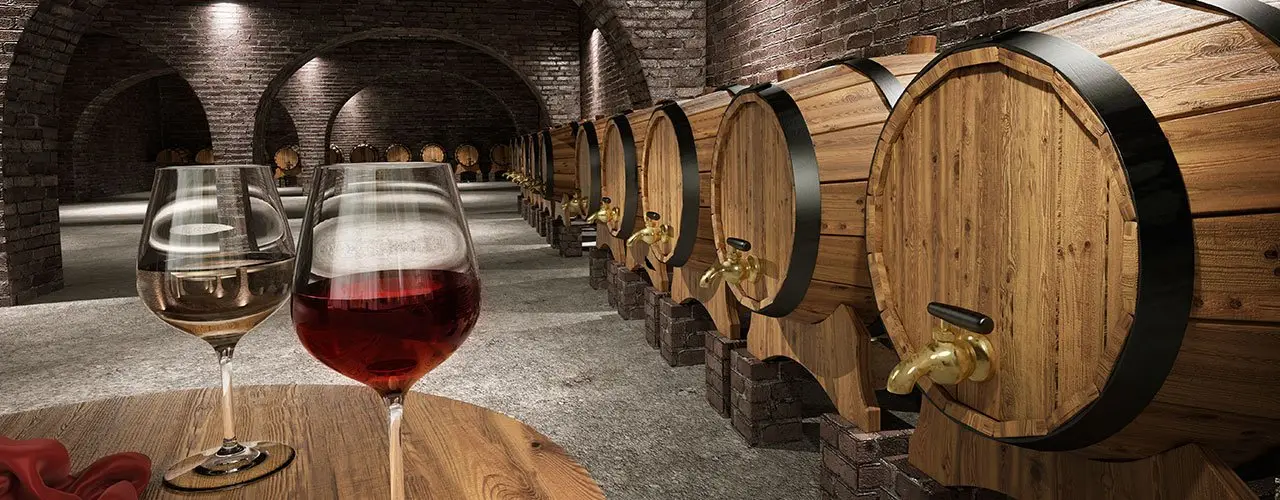
Image Credit:webstaurantstore.com
Maintaining a proper temperature is ideal for storing red wine properly. There are storage tips that aid in maintaining the proper temperature for your wine storage
Keep It Cool
Heat is the main enemy when it comes to storing wine, both red and white. Temperatures above 70 degrees will quickly and prematurely age your wine. Extremely high temperatures will also ‘cook’ your wine making it develop some off-flavors and aromas.
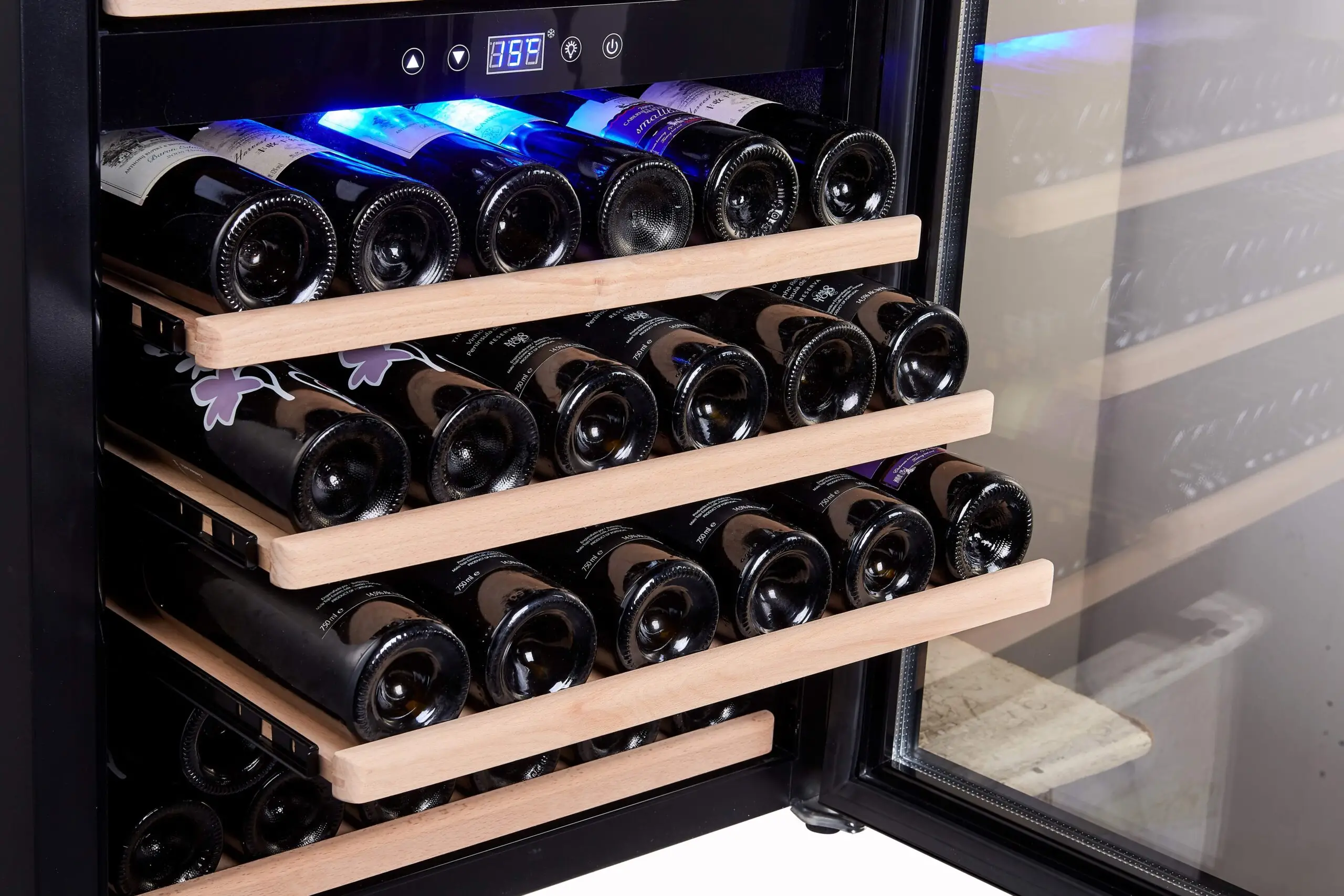
Image Credit:bodega43.com
While too high temperatures will ruin your red wine quicker than low temperatures, storing wine in extremely low temperatures is equally a problem. If your wine fridge has a temperature below 20 degrees, the wine will freeze and expand, pushing the cork out or cracking your wine bottle and allowing oxygen into your wine.
If you are to keep your wine cool, let it not freeze; if you are to keep it warm, let it not cook. Always ensure your wine is stored at the ideal temperature range of 45 to 65 degrees. Otherwise, storing at an optimum temperature of 55 degrees is the safest bet.
Store at a Consistent Temperature
Another key factor in maintaining the proper temperature for wine storage is to avoid temperature fluctuations. Wine reacts to temperatures, so constant fluctuations in temperatures make its chemical components always move and change and slowly break apart, losing its special aroma and flavor.
Perfect Relative Humidity
The humidity level of your wine cellar should be at 70%, but anywhere between 50 and 70 % is equally safe. Low humidity below 50% will dry your corks, letting air into the wine bottle and oxidizing the wine. Conversely, humidity levels above 80% can create mold and damage your wine labels making it difficult to display them
Avoid Direct Sunlight
The key is to store your wine in a dark environment. UV rays can prematurely age your wine and oxidize it. If you can’t keep your wine bottle in the dark, place it in a box or cover it with a piece of cloth, then store it.
Other Important Red Wine Storage Tips

Image Credit:tasteofhome
Apart from ideal temperature, there are other factors to consider for the safe storage of your red wine.
Proper Storage Facility
For short-term storage, a wine fridge or wine cool can help. These items can also help when you need to cool your wine before serving, but it is important to maintain their operating temperatures of 45 and 65 degrees.
For larger collections, wine cellars, basements, and cabinets are more suitable, even though they can be expensive to maintain. You can also use any enclosed space, provided it is void of drastic temperature fluctuations.
Lay on the Side
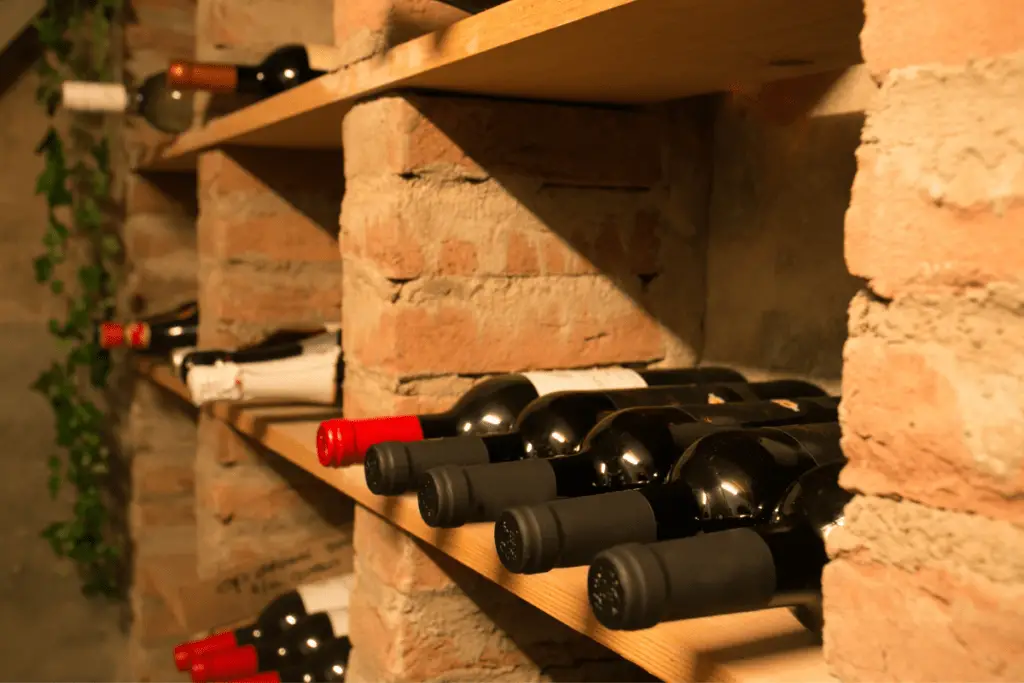
Image Credit:unravelingwine.com
The correct bottle position for a corked red wine bottle is lying horizontally on a wine rack. This position keeps the cork moist, preventing air from seeping into the bottle to oxidase your red wine. It also helps save some space in your wine cellar.
No Vibrations and Shaking
Store the red wine away from the vibrations of the refrigerator and other home appliances. Vibrations may damage wine over time or disrupt the aging process by disturbing the sediments at the bottom of the wine bottle.
Similarly, avoid moving the wine around too often after storing it. Finally, do not stack wine bottles on each other. It is proper to have a storage place that allows you to remove one bottle without disturbing the others.
Avoid Strong Odors
While it may seem convenient, do not store corked bottles of red wine in the kitchen. The kitchen is full of food and trash odor that can permeate the cork and taint your red wine. Instead, store red wine away from potential contaminants to maintain its aroma and taste.
Tips for Maintaining Red Wine at the Optimal Temperature

Image Credit:pinotsquirrel.com
How you store and handle your red wine is the key to maintaining the optimum storage temperature. It is possible to control your wine's temperature from the time of purchase. Some of the tips you should follow to help you maintain the optimal temperature of your red wine are as follows
1. Don't purchase wine from facilities that do not do temperature control for the red wines. Buying wine from too hot or too cold outlets could be the wine is already of low quality, and you don't want to purchase wine there
2. When driving for a long distance and you purchase your wine on your way, or going for wine tasting, carry along something insulated to hold your wine in place. A good option for such short-term events is the insulated polystyrene wine shippers with ice packs on the outside
3. Do not put your wine in the trunk when traveling. The trunk could be too hot, and cook your wine instead. The passenger seat, where you can control the temperatures, is a better option
4. For home storage and use, take the wine right into the storage space once you are home. Don't leave it in your car outside because the temperatures might drastically fluctuate and degrade your wine.
5. Storing wine in your living room may look appealing, but it is not the best idea. Home temperatures may fluctuate, and it might be bad news for your wine if you are experiencing hot summer days with no air conditioning. Instead, use a wine fridge or wine cooler, and if you are lucky to have a temperature-controlled wine cellar or basement, keeping it there is the best option
6. Avoid storing wine in extremely hot or cold locations at home. Also, don't store wine near vibrating home appliances such as the refrigerator and the washer
7. If you have a small wine collection of your preferred bottles, consider using a wine refrigerator, but for large collections, a wine cellar or any professional storage works best
8. If you order red wine online, let it be shipped immediately after the purchase, so it doesn't get damaged during transit, or opt for shipment during normal temperatures
9. Once you open your bottle of wine and want to store it back, follow the tips on storing opened red wine to keep safe.
Conclusion
Keeping your red wine safe and ensuring it ages fine for enjoyment requires proper storage and controlled temperatures. Red wine is best stored at temperatures ranging between 45 and 65 degrees. Any condition above or below could damage your wine's flavor and aroma. Also, you should follow other storage tips to keep your wine flavorful. It must not be expensive, but red wine storage needs extensive care, so it doesn't become undrinkable. Take note that wine proper wine storage temperature is essential even after opening your wine.
